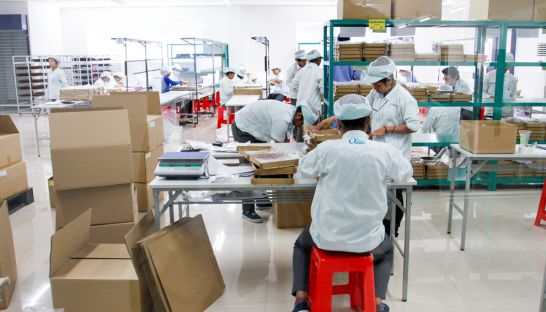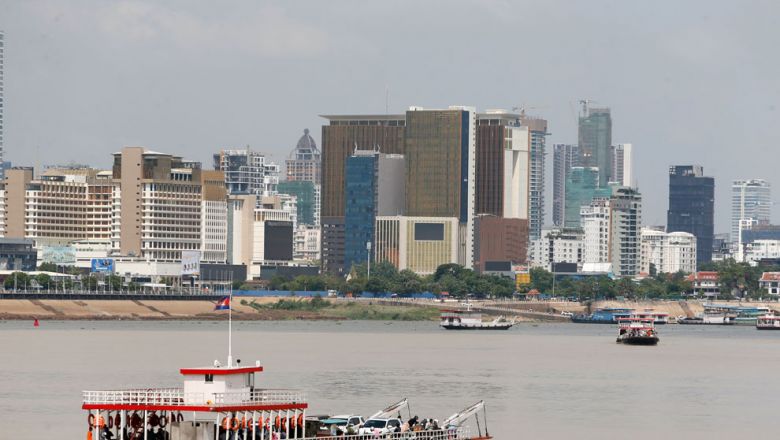Japan building Mekong supply chain
Japan building Mekong supply chain
Greater connectivity between Japan and Cambodia is tightening economic links between the two countries while catalysing Japan’s ambitions to develop a chain of industrial complexes that cut a tract through the Lower Mekong region.

Officials at Japan External Trade Organisation (JETRO), Japan’s development agency, say Cambodia’s economic attractiveness lies in its low-cost labour and geographical location, lying along the east-west economic corridor between Thailand’s industrial heartland and the Vietnamese container port of Cai Mep. Japanese firms are building factories and industrial parks along the corridor to feed the increasingly complex supply chains of goods manufactured for consumer markets in Asia and the West – and eventually Cambodia itself.
“Cambodia is starting to become the focus of Japanese investors because of its location between Thailand and Vietnam, and it is a good location to manufacture here and then export to other countries,” explained Masashi Kono, chief representative of JETRO in Cambodia.
“But what is going to happen more and more is that companies are going to come to Cambodia to manufacture and then sell in Cambodia as well.”
Bilateral trade between Japan and Cambodia has increased eightfold over the last decade, according to the Japanese Ministry of Foreign Affairs. Ministry data show Cambodia imported $366 million worth of goods from Japan in 2015, mainly vehicles and machinery, compared to nearly $1.2 billion in exports – mostly garments, footwear and electrical components.
The rise in trade has been accompanied by deepening investment, with a growing number of Japanese companies setting up operations in the Kingdom.
“Japanese companies, particularly in manufacturing, have paid more and more attention to Cambodia in recent years,” said Ai Onish, an official at the Japanese Ministry of Foreign Affairs’ First Southeast Asia Division.
“In the past five years, the number of Japanese companies in Cambodia increased by a factor of 3.4,” he said, noting that in 2010 there were just 50 registered Japanese firms in Cambodia, whereas today there are 171.
The figures, however, do not include the myriad smaller Japanese companies that have set of shop in the Kingdom, and which have reportedly also experienced significant growth in recent years serving both regional markets and a small but growing Japanese expatriate community.
Total Japanese investment in large-scale qualified investment projects (QIPs) topped $800 million between 1994 and 2015, according to the Council for Development of Cambodia (CDC). The investment agency approved another seven Japanese QIPs during the first half of 2016, adding another $260 million to the cumulative total.
Japanese firms have directed the bulk of their capital investment into Cambodia’s special economic zones (SEZs), and are the biggest single investor in these industrial parks, according to JETRO, with over $300 million invested between 1994 and 2014.
Naoaki Kamoshida, counsellor at the Embassy of Japan in Phnom Penh, explained that Japanese investors have adopted a strategy that spreads their investments across the region to minimise costs and mitigate risk. The latest wave of investment followed devastating floods in Thailand in 2011 that convinced many affected Japanese firms to open auxiliary factories in Cambodia, benefitting from both its lower labour costs and an additional production line.
“Based on the ‘Thai +1’ strategy, Japanese companies [operating] in Thailand have come to Cambodia and constructed their factories for the diversification of their supply chains,” he said.
Under this strategy, factories in Cambodia typically produce the labour-intensive components used by factories in Thailand and Vietnam, where a more highly skilled workforce completes the more complex steps in production.
“The low labour cost in Cambodia is an attractive element for Japanese manufacturers, especially in labour-intensive industries,” said Kamoshida.
The increase in industrial activity is driving a push for better connectivity as Japanese businessmen shuttle back and forth, exchange product samples and have finished goods delivered to market.
Earlier this month, All Nippon Airlines (ANA), Japan’s largest airline, launched direct flights from Tokyo to Phnom Penh. The new route is both a response to rising bilateral trade and tourism, and a sign that the carrier is confident this growth will continue.
Direct flights could play a significant role in securing Japanese investment by providing a time-efficient link between Japan and the manufacturing supply chains its private sector is developing in the Lower Mekong region, said Ito Takatomo, senior investment adviser at JETRO Cambodia.
He said products manufactured in Cambodia are currently sent to Japan by ocean cargo – an eight-day voyage – before being delivered to markets in Europe and North America. Air connectivity provides a convenient fall-back cargo option, even with limited capacity, allowing Japanese manufacturers to deliver time-sensitive samples or supply chain components.
“Factories in the Phnom Penh SEZ that provide wiring in car motors for companies like Toyota usually export through shipping, but as the process is linked to a wider automobile assembly line with Japan, it cannot stop or be delayed by the late delivery of certain components,” Takatomo said. “So when there is an urgent need, products can now be sent by air cargo.”
Just days after the first ANA direct flight touched down in Cambodia, Phnom Penh SEZ – already home to 43 Japanese companies – announced it had secured a deal with Japanese cosmetics manufacturer Shinohara to build a factory in the zone.
Hiroshi Uematsu, CEO of Phnom Penh SEZ, said he expects more Japanese firms to follow the new flight path, which cuts the travel time on air cargo shipments from Tokyo to less than six hours.
“This direct flight will intensify the dynamism of our relations with Japan,” he announced in a press release. “For investors, Cambodia will seem less far away from Tokyo.”














